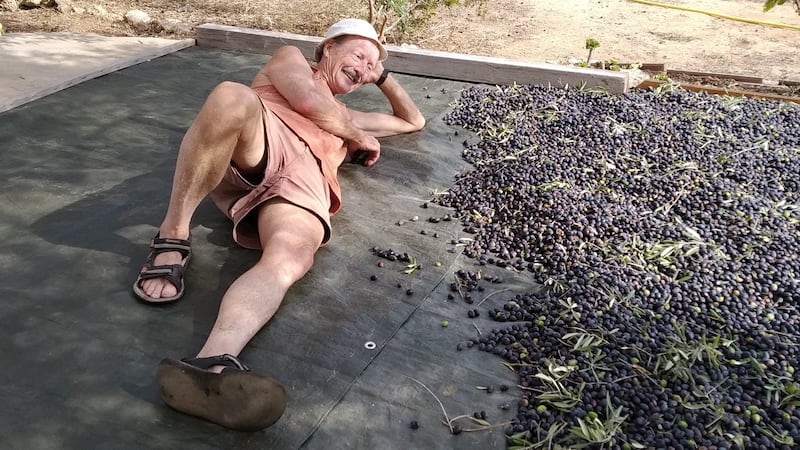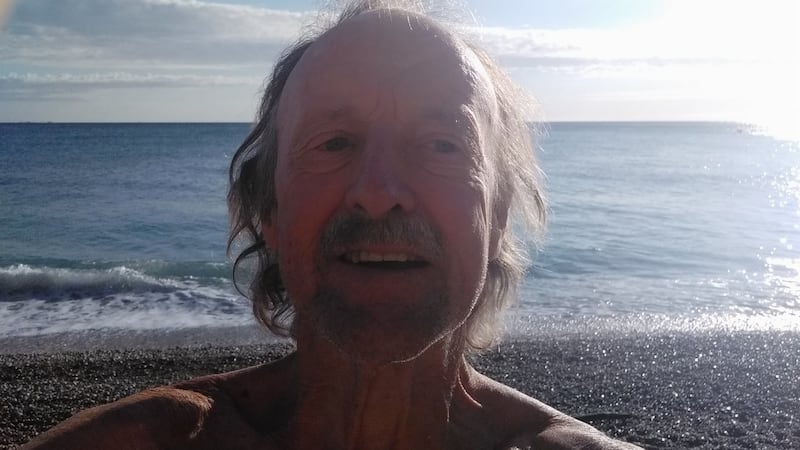Colm Rush, who is originally from Dublin, has taught English in Spain, Italy, Cyprus and Tunisia, as well as in Ireland and England. He settled in Pamplona, in northern Spain, and taught for 15 years at the Official School of Languages, a language-teaching centre for adults. He now lives in L’Ametlla de Mar, in Catalunya
When the Covid lockout loomed large, the choice was quite simple: stay cooped up in an eighth-floor city flat with a poky lift and elderly neighbours or have the run of an olive grove beside the Mediterranean. As olive groves go this one is quite small: 30 olive trees, five or six carobs, three almond and two apricot trees. Neighbours to the side have similarly sized plots, and those on the other side of the lane have somewhat larger spreads.
What my neighbours have in common is that they live in the small fishing town on the coast, 2km away, and come to tend their plots each day. That, plus their habit of spreading herbicide early in the year so the ground under their trees is always bare and neat, means they differ from me.
It's a real pleasure to take hold of an olive-laden branch and run the comb down its length, dislodging the fruit, especially if it's the multicoloured Sevillenca variety – green, yellow, red and purple, all in different stages of maturity
We also differ in our methods of harvesting. I prefer using a comb, a rakelike tool, to beating the branches with sticks, or using a modern, infernally noisy, petrol-fuelled branch shaker, which scares the living daylights out of me, never mind the trees. On the other hand, it’s a real pleasure to take hold of an olive-laden branch and run the comb down its length, dislodging the olives, especially if they’re the multicoloured Sevillenca variety, green, yellow, red and purple, all in different stages of maturity.
When I made the move, in the middle of March, wild flowers and grasses were springing up all around the grove, a joy to behold, and birdlife was abundant. One particular blackbird used to give an impromptu concert every evening from the crown of a pine tree opposite. Other birds seemed to delight in playing hide and seek with me when I tried to get close enough to identify them. They more than made up for the lack of human company.
I didn’t mind being so confined, either; on the contrary, it gave me ample time for my morning yoga, evening meditation and general contemplation of nature. Something was missing, however, and beginning to nag at me in the midst of this oasis of calm. How would I be able to get to the sea to swim, to indulge in my favourite occupation, with summer fast approaching and no sign of the easing of restrictions?

Granted, it was only 3km away, but police were constantly patrolling, and beaches were definitely out of bounds. So it had to be on foot, either by back roads or cross country. Out came the map, with its intricate network of thin lines indicating country lanes and dotted lines that seemed to indicate gullies that carry the rainwater down to the sea. As it rains so seldom these were often quite shallow and populated with olive and almond groves, becoming deeper and forming little lagoons, and then sandy coves, only where they reached the rocky coast.
I decided to make my first reconnaissances at night. It is surprising how much light there is, even on moonless nights, once you let your eyes adjust. And once I got over my initial, deeply instinctive fear of the dark, I realised darkness was my friend, cloaking my every movement and shielding me from observation. I quite enjoyed the feeling of solitude and oneness with my surroundings as I glided through the night.
My first efforts, towards coves to the south, weren’t a success. The tracks gave out, ending at houses or in olive groves, and the gullies were deeper and wilder, offering no way through. So my nocturnal rambles turned to the north, where the going was easier. As I became familiar with the lie of the land and with the paths criss-crossing it, I became bolder and started daytime explorations.
During one prelunch outing I stumbled on a gully with a discernible path running along the edge that turned into a track as it approached the old highway. I scooted through the round, head-high tunnel under the road and then, hearing the traffic on the motorway ahead, decided to press on a little further, through the tunnels beneath it and the railway.

Having come this far, no way was I not going to get in for a quick dip to cool down and wash off the sweat
I was now out on the coast road. I scurried across just before a police car came along, and skirted the now deeper gully till I came out, unexpectedly, at the car park above the cove, duly festooned with police tape: DO NOT PASS. I went around it, and there was the sea below me in all its splendour, the sun glinting off it dazzlingly.
It was like reaching the promised land. I couldn't believe I had made it. And having come this far, no way was I not going to get in for a quick dip to cool down and wash off the sweat. Surreptitiously, of course. Never before had a swim seemed so deserved.
If you live overseas and would like to share your experience with Irish Times Abroad, email abroad@irishtimes.com with a little information about you and what you do











